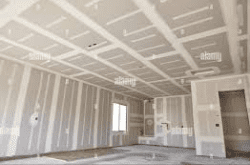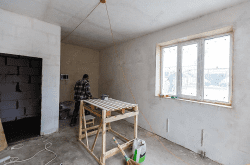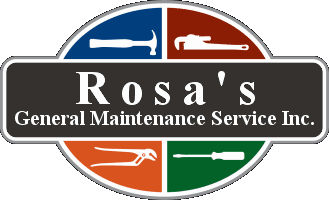Drywall Repairs


Rosa’s General Maintenance Service Inc is located in North Port, Florida. Our service areas are North Port FL, Venice FL, Englewood FL, and Sarasota FL. We specialize in doing drywall repairs.
When it comes to drywall repairs, it is almost inevitable that you will have to call a drywall repair specialist to patch or repair drywall somewhere in your home, from the smallest dent to large holes, or an entire section of a wall area.
There are a few things to consider when doing drywall repairs. For an example, matching the texture, and matching the color of the paint to have a perfect finish. This can be a difficult task because there are many variables involved. The end result of a good drywall repair is not being able to tell where the drywall repair was done.
To repair a large hole in the wall, you will need to cut away the damaged section of drywall between the studs, and create a support for the patch with nailing strips.
For this you will need a drywall saw, 1-inch by 3-inch nailing strips that are approximately ½ inch longer than the height of the opening, a stud finder, an electric drill, 1 ¼-inch wood screws, drywall compound, a 10-inch drywall knife, drywall tape, and fine-grit sandpaper.
Begin by locating the studs on both sides of the opening from the hole in the wall, and mark the location of the studs with a pencil. Cut out a rectangular section of the damaged area with a drywall saw. Cut out the drywall from one stud to another, and trace the cutout on a new piece of drywall. The patch should be about one-eighth of an inch smaller in diameter than the original piece, so keep this in mind when cutting it out.
The next step is to attach the nailing strips to the inner sides of the exposed studs. Start by drilling pilot holes, and attach the strips with at least four, 1 ¼-inch wood screws. After the nailing strips are securely attached to the studs, attach the drywall patch to the nailing strips with drywall screws. Try to recall where the screws are located in the nailing strips so they don’t get in the way of the drywall screws.
Lastly, fill in the seams with drywall compound, and smooth them with a 10-inch drywall knife.Cover the filled seams with drywall tape, and apply an even layer of compound over the taped areas. Let the compound dry for at least 24 hours. If cracks appear, reapply the compound, and allow it to dry for an additional 24 hours. Finish by sanding the repaired areas with fine-grit sandpaper.
Once you have sanded the areas where the drywall was repaired, you should have a smooth flat surface and will be ready to apply the texture to match the existing texture.This is where you skill and knowledge will be tested.
Although drywall texturing is not difficult for the do-it-yourselfer, it does take practice and confidence to get professional looking results. One important thing to note is that drywall texturing is incredibly messy. Whether you are spraying on drywall texture or applying it by hand, know in advance that it will get everywhere. A word of advice is spare no expense in drop cloths.
To match an existing unique or custom texture in a high visibility area, you may want to consider calling in a drywall repair specialist, or a handyman.

